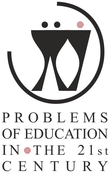MOTHER TONGUE LEARNING IN THE ESTONIAN NEW HIGH SCHOOL CURRICULUM
| Title | MOTHER TONGUE LEARNING IN THE ESTONIAN NEW HIGH SCHOOL CURRICULUM |
| Publication Type | Journal Article |
| Year of Publication | 2012 |
| Authors | Zamkovaja, N, Moissejenko, I |
| Journal | Problems of Education in the 21st Century |
| Volume | 41 |
| Start Page | 140-153 |
| Date Published | April/2012 |
| Type of Article | Original article |
| ISSN | 1822-7864 |
| Other Numbers | ICID: 990610 |
| Keywords | mother tongue, students’ needs, text-centered approach |
| Abstract | This article considers the content and structure of the new State Curriculum for high schools in Estonia, in which drafting the authors participated. The curriculum was applied in 2011/2012 academic year, and has being put into action gradually, starting from the 10th form. It is totally separated from the curriculum for middle schools. |
| URL | http://oaji.net/articles/2014/457-1409840549.pdf |
| DOI | 10.33225/pec/12.41.140 |
| Original Publication | ОБУЧЕНИЕ РОДНОМУ ЯЗЫКУ В НОВОЙ ГОСУДАРСТВЕННОЙ ПРОГРАММЕ ДЛЯ ГИМНАЗИЙ ЭСТОНИИ |
| Refereed Designation | Refereed |
| Full Text |
